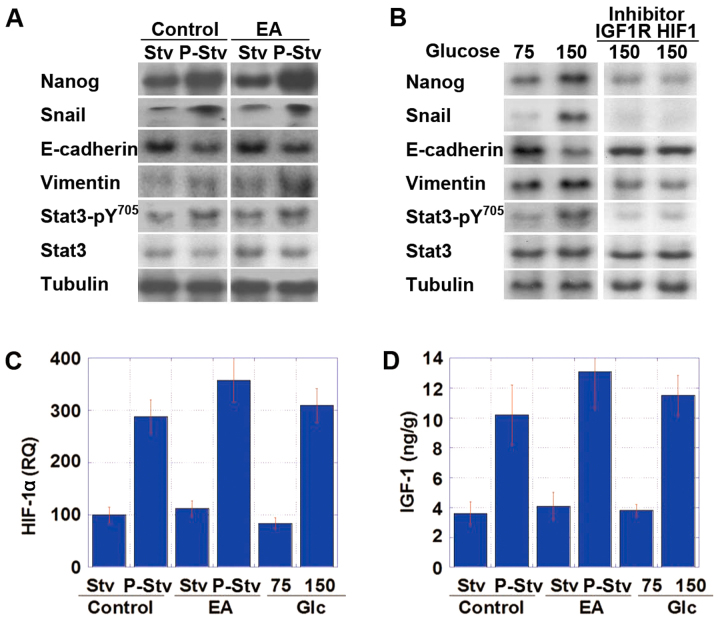Figure 6.
Effect of post-starvation overconsumption on the epithelial-mesenchymal transition (EMT) phenotype of CT26 cells. (A) Protein levels of stemness- and EMT-associated factors were examined in a mouse model of CT26 cell tumors of ICR-mice fed the control or elaidic acid (EA)-enriched diet under starvation (Stv) and post-starvation (over-intake) (P-Stv) conditions. The time schedule was the same as that shown in Fig. 5. (B) Protein levels of stemness- and EMT-associated factors in in vitro experiment of CT26 cells following simulation of the starvation-over-intake cycle. CT26 cells were treated with hypoglycemic DMEM (75 mg/dl glucose) for 24 h, followed by normoglycemic DMEM (150 mg/dl glucose) for 24 h, and then analyzed. For the examination of the signaling pathway, the cells were treated with inhibitors of insulin-like growth factor-1 receptor (IGF-1R) or hypoxia-induced factor-1α (HIF-1α) during cultivation in the presence of each glucose concentration. (C and D) Expression of (C) HIF-1α mRNA and (D) IGF-1 protein in the intermittent calorie restriction (ICR)-model or in CT26 cells cultured in 75/100 mg/dl glucose. RQ, relative quantity (%).

